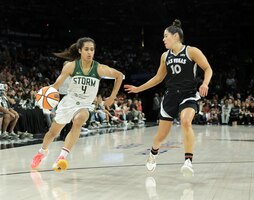Top 20 WNBA Player Rankings Ahead of 2025 Season
Top 20 WNBA Player Rankings Ahead of 2025 Season
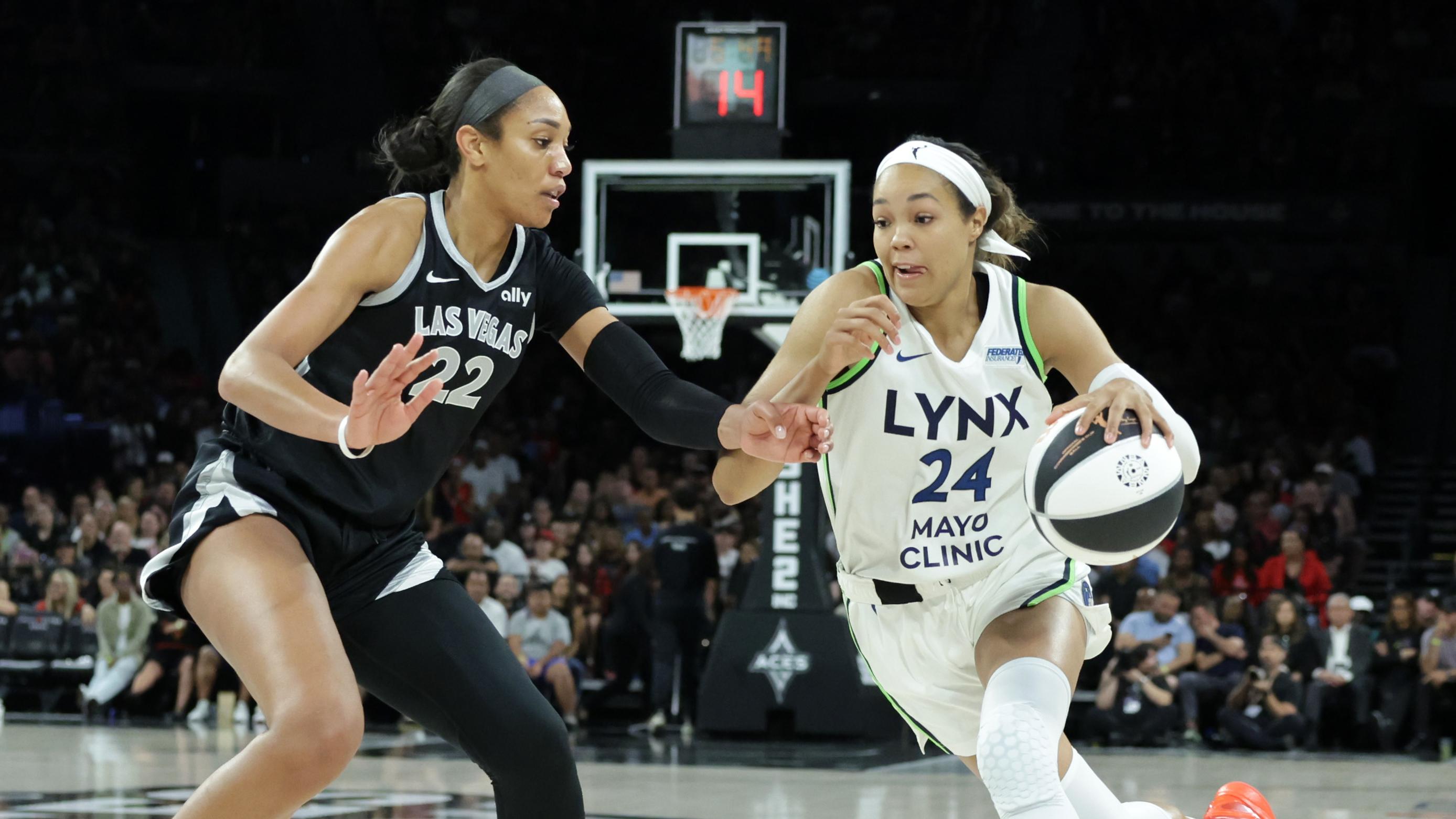
What an inaugural season of Unrivaled we got to witness—and a major congrats to Rose BC for winning the league's first championship. An electrifying campaign flowed nicely into an entertaining, upset-heavy postseason sprint that was capped off by a compelling title game.
Following that, I had the unenviable task of ranking the top 20 WNBA players heading into the 2025 season—somewhat of a fool's errand for a league this talented, but a challenge I accepted nonetheless.
How well some of these players performed during the Unrivaled season holds a little bit of weight, but it was important for me not to index too much on the season positively or negatively; full-ish court three-on-three basketball is still a wildly different format from the five-on-five hoops we'll get to see in May.
Ultimately, my criteria is a mix of current skill-set value, production (last season weighs the heaviest, but body of work still matters), efficiency and impact. With down years, players with a history of productivity and impact get a little more grace from me than younger players who haven't yet proven it consistently.
Roster and role context obviously affect different players in different ways, and I tried my best to account for that when putting this list together.
Naturally, I'll adjust my rankings once we have film on the upcoming W season.
And as a final note: No, I do not hate your favorite player who may be ranked lower than you'd like.
Let's get into the rankings, shall we?
Honorable Mentions
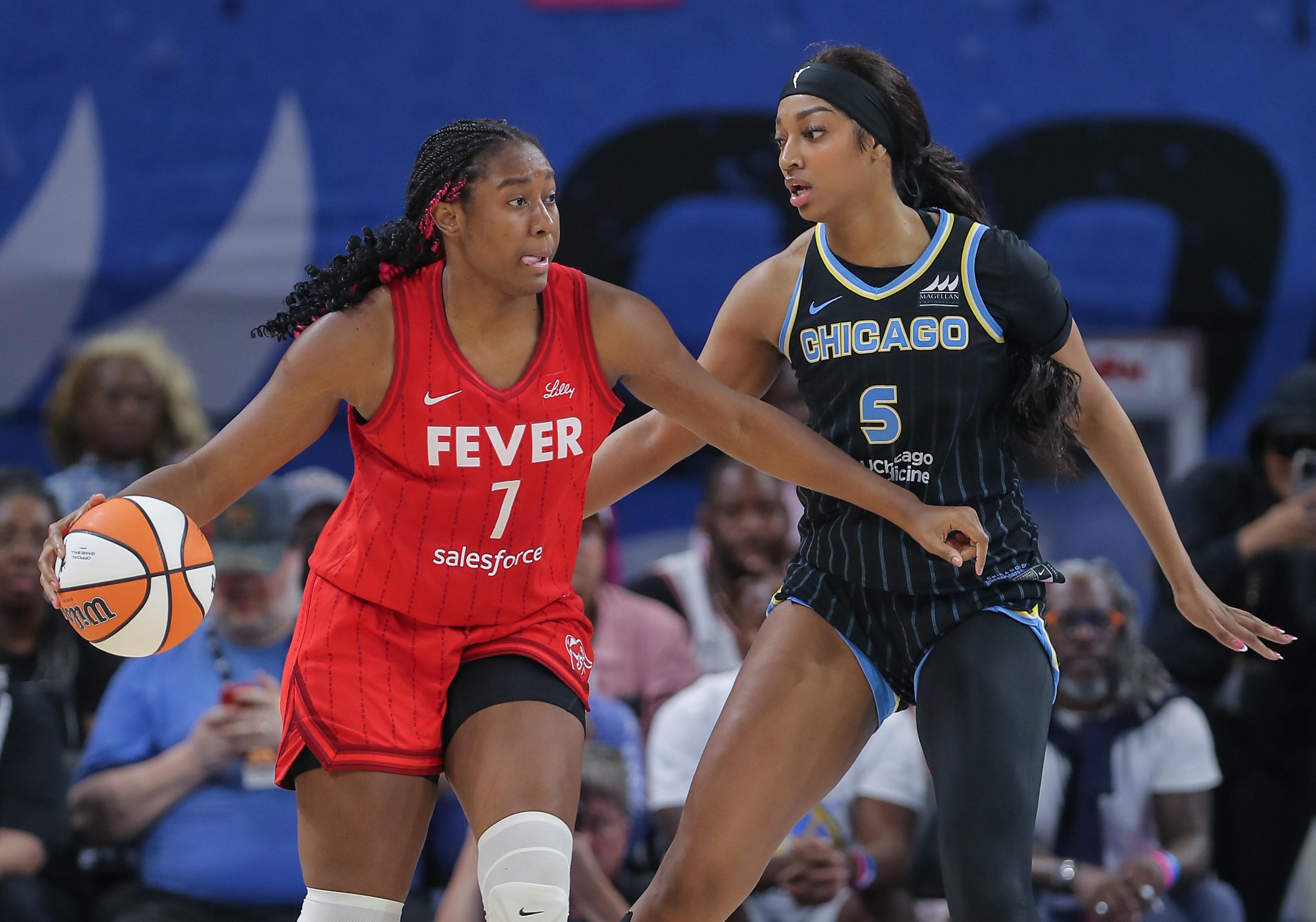
Any ranked list is going to have people on the outside feeling aggrieved. Top 10? You must hate the player you'd hypothetically have 11th. Top 15? Surely you want the 16th player to stub their toe.
By virtue of going with a top-20 list, there are going to be multiple players who participated in last year's All-Star game that won't be included. If nothing else, this is a testament to how talented the league is—and why upcoming expansion is needed.
As this was genuinely a tough exercise, there were a few names I wanted to make sure were mentioned before truly digging in. There were, by my initial rough draft, at least 37 players who I could at least make an argument for top-20 impact last season (like DeWanna Bonner or Courtney Williams), getting healthier and making a push for it (Brittney Sykes or Betnijah Laney-Hamilton), or growing into that form with a skill leap this season (Alanna Smith or DiJonai Carrington.)
Alas, I can't shout out every good player, so I will not bore you with 17 honorable mention blurbs—hit me up on Twitter (@NekiasNBA) if you're genuinely curious and we can talk about it. In the interest of time and space, here are a few—just a few!—players I had a tough time leaving off and was sure people would ask about. In alphabetical order:
Aliyah Boston: Much like the Fever as a whole, it felt like a tale of two halves for Boston. She initially struggled (by her standards) to find her footing in the Fever's uptempo, ball screen-centric offense. By the time the season ended, she'd formed a mind meld with Caitlin Clark both as a scorer and short-roll passer when playing out of traps.
Boston's a good-but-not-elite-yet defender who should have an easier time displaying those talents with better defenders flanking her this season. Barring injury, she should wind up higher on the list by this time next year.
Rhyne Howard: On any given night, Howard can look like a top-10 player. At her best, she's an effortless scorer with the size to shoot over anyone, the improving strength and handle to access virtually any area on the floor, and the instincts to be a high-level disruptor defensively.
The "any given night" of it all is my biggest hang-up; she hasn't been able to put that together consistently. At least not yet. The biggest question is how much of that should be attributed to the 24-year-old Howard and her youth, and how much of it has been the roster context she's played in. We should get a better feel this season, and I'm excited to see what it looks like.
Bri Jones: My second-ranked free agent heading into the offseason, Jones is one of the more imposing 5s in the league. There aren't many players better at establishing deep positioning, whether that comes in transition or within the flow of a half-court possession. She bullies smaller defenders, wins at a high rate on the offensive glass and may have some hidden potential as a jump shooter.
As she gets further away from her injury-defining 2023 season, her defensive versatility is what keeps her from cracking the top 20. As mentioned in the free-agency piece, the hope is that last postseason's showing was more of a blip, a matchup deal, than an actual sign of things to come.
Ezi Magbegor: This is one of my favorite players in the league.
Magbegor is already one of the league's best and most versatile defenders. Her mobility allows her to hedge out on ball screens, play at the level and contain, or switch comfortably onto the perimeter. Her length and timing at the rim makes her one of the most electric rim protectors in the league. There will likely be a DPOY or two in her future.
The real intrigue is on the other end of the floor. She's a plus-driver at the 5 with room for more. We've seen spells of positive three-point shooting for her, but it hasn't come along quite yet. If it does...whew, good luck.
Angel Reese: Almost certain to be the most popular omission, Reese has had quite the calendar year. She put together an All-Star campaign in Year 1, establishing herself as the league's best rebounder and a near-All-Defensive team player.
That defensive versatility popped during the Unrivaled season, anchoring an elite defense en route to Defensive Player of the Year honors. Reese is also an underrated passer and foul-drawer, and her handle's already at a level where she can be trusted to grab-and-go after misses.
What keeps from the top 20 is the scoring efficiency; it wasn't there in Year 1, though we saw encouraging signs during the Unrivaled season. Here's hoping that improvement—notably her shoulder nudges on drives and post-ups, as well as the hand placement and release point on her finishes—carries into the W season.
Satou Sabally: We only got 15 games of Sabally last season, so she wasn't able to fully build on her All-WNBA campaign of 2023. What we saw last season (45.2% on 5.6 attempts), in Olympic play (38.5% on 6.5 attempts), and during the Unrivaled season (38.5% on 4.6 attempts), was increased confidence in her three-point shot.
If that's a legitimate tool in the bag now, she should be much tougher to deal with. I'm keeping tabs on the inside-the-arc work; she converted roughly 43 percent of her twos across the W season, Olympic play and Unrivaled. In an ideal world, she blends her drives, post usage and jumper to become a three-level threat with solid defense to boot. Here's hoping she's able to do so.
Nos. 20-16
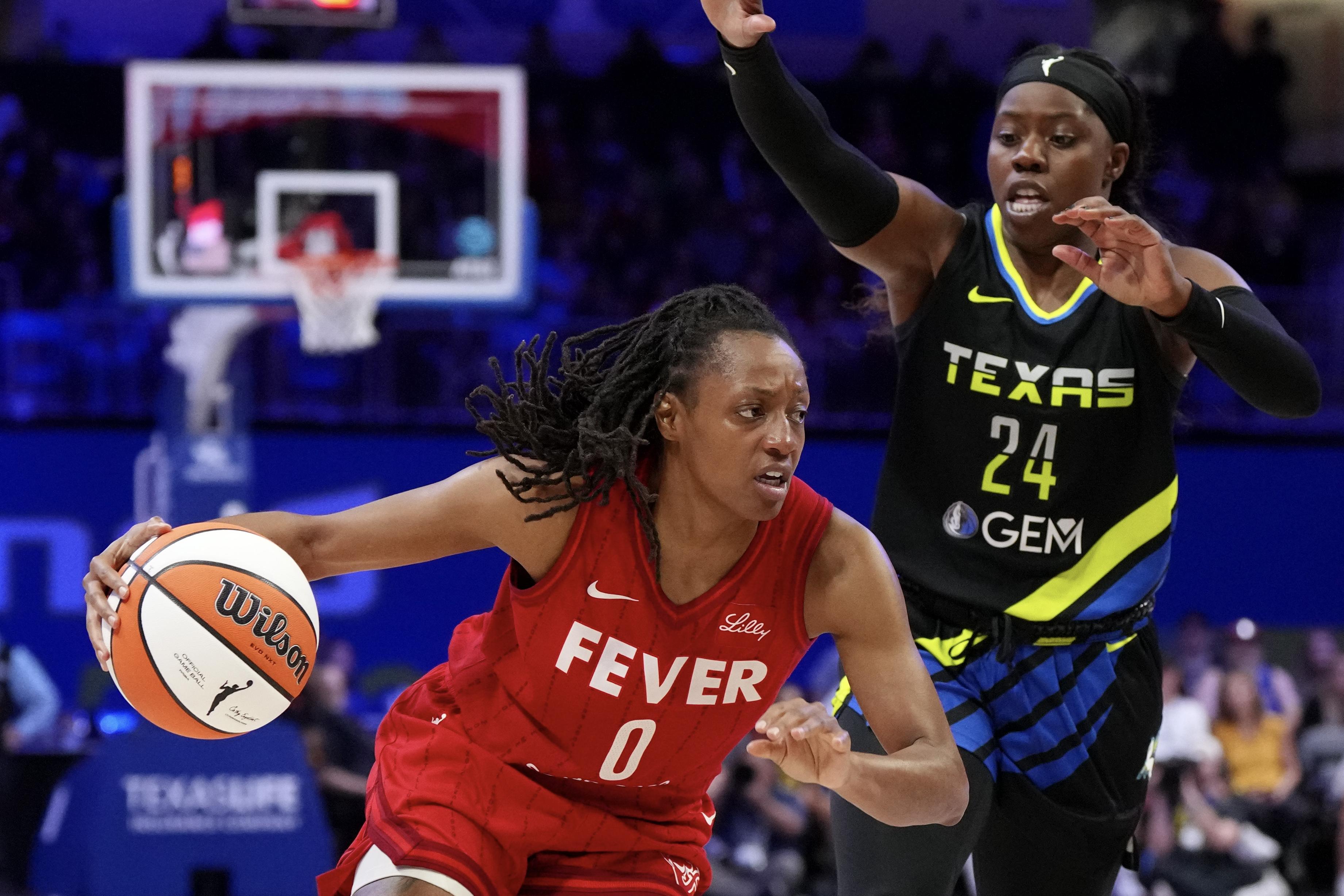
20. Allisha Gray, Wing, Atlanta Dream
Gray is one of the league's best, most underrated two-way talents. She can and has been trusted to defend the opponent's best perimeter player, with her blend of (hand) quickness and screen navigation popping off the screen. It's honestly a bit surprising she doesn't have an All-Defensive team selection under her belt yet.
Offensively, Gray is a strong attacker against bent defense with, judging by her Unrivaled run, a bit more self-creation juice than you'd think. Last season was her first under league-average efficiency (52.6 True Shooting, league average 53.6) since her rookie year, though I'd argue last year's roster context (and injury bug) were big factors in that.
19. Jewell Loyd, Guard, Las Vegas Aces
Loyd has proved to be a high level shot-maker and underrated playmaker while holding her own defensively. She's coming off the least efficient season of her career, posting lows in effective field-goal percentage (40.8, league average was 49.5) and True Shooting (49.7, league average was 53.6).
The Aces' context should be better, particularly from a spacing standpoint. Per Second Spectrum, Loyd was one of 10 players last season to log at least 100 drives and have a help defender present on at least 80 percent of them. With more room to operate with, and a walking double-team (A'ja Wilson) to play off, we should see a better, more efficient version of Loyd.
18. Kelsey Mitchell, Guard, Indiana Fever
Speaking of efficiency, Mitchell is coming off her most productive (19.2 points) and efficient (58.8 True Shooting) season of her career. Long a tough bucket-getter and underrated driver, Mitchell thrived off the attention that Caitlin Clark and Boston commanded.
She was fully unlocked as a transition and off-ball threat within Indiana's system. Mitchell's post-Olympic break play (23.4 points, 45.4% on 7.7 3s) nearly earned her an All-WNBA second-team spot.
17. Dearica Hamby, Forward/Big, Los Angeles Sparks
In her first season as a full-time starter while also being the top option (she did start in 32 games with the Aces in 2022, though the role was different), Hamby broke out in a real way.
She posted career highs in points (17.3), rebounds (9.2), assists (3.5) and steals (1.7) while showcasing more comfort as a three-point shooter (34.1% on 2.2 attempts, though she shot 40.4 percent before the Olympic break).
Now that she's reunited with former Aces teammate Kelsey Plum, I'm excited to see how their two-player game (ball screens, handoffs, give-and-gos) evolves.
16. Arike Ogunbowale, Guard, Dallas Wings
It's hard to say Ogunbowale's season flew completely under the radar; the Wings were a bit of a mess overall, and Ogunbowale still earned All-WNBA second-team honors.
But it does feel like Ogunbowale's growth has flown somewhat under the radar.
The tough shot-making (22.2 points last season) will always stand out—and the below-average efficiency (52.0 True Shooting) will make Tier 1 conversations tough to have—but she has become a more willing and more decisive passer (career high 5.1 assists).
She did also lead the league in steals (2.1), though there's a per-possession consistency in terms of approach you'd like to see improve. Not many players put pressure on defenses in the way that Ogunbowale does.
Nos. 15-11
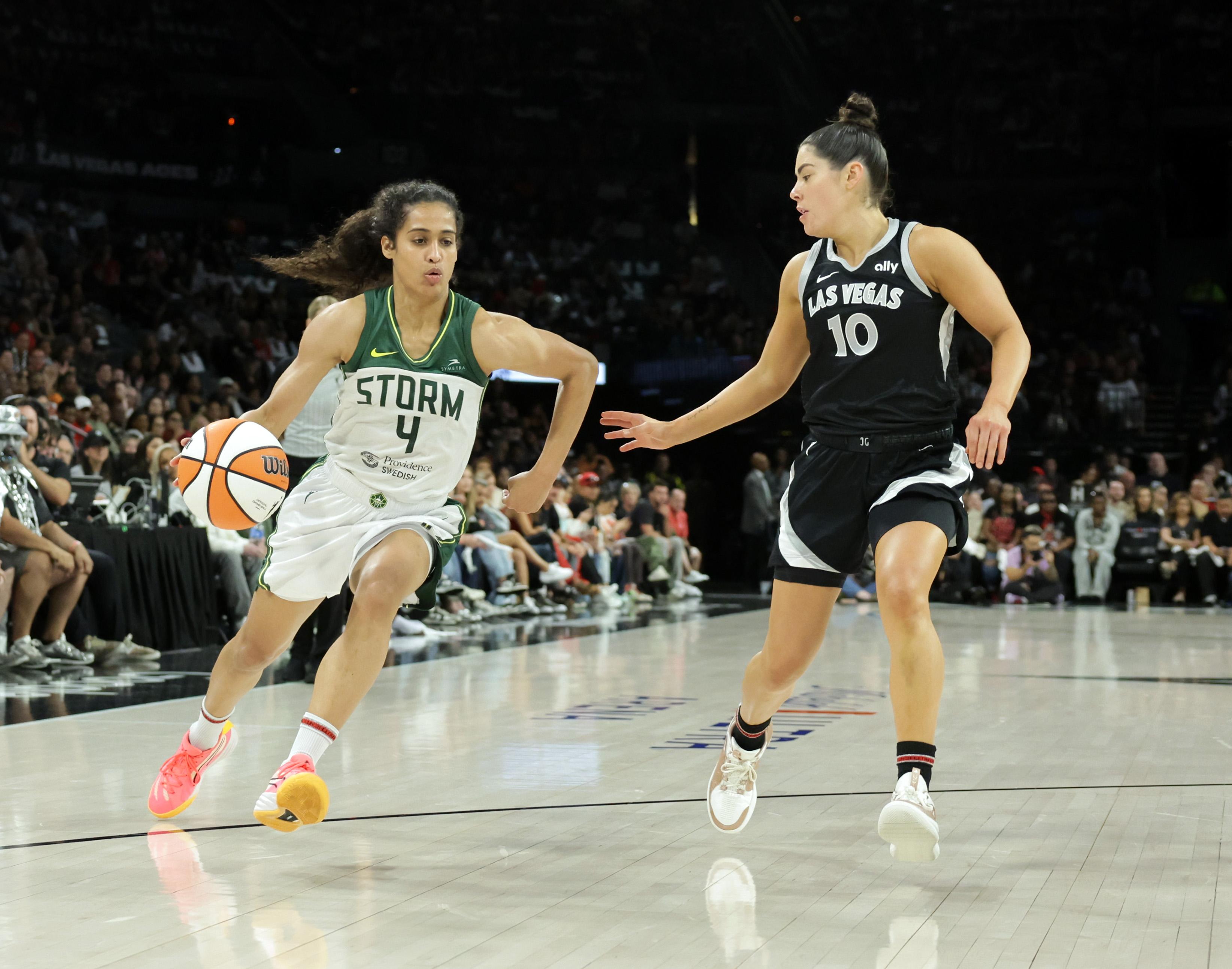
15. Kayla McBride, Guard, Minnesota Lynx
McBride is coming off a season where she was arguably the second-best player on a team that nearly won a title. She shot the leather off the ball from deep (40.7% on 6.6 attempts), while producing more as a driver (1.03 PPP, per Second Spectrum) than bigger names like Kahleah Copper (1.02), Kelsey Plum (0.99), Caitlin Clark (0.98) and Jackie Young (0.97). Similar to Plum in Vegas, McBride's work as a screener amplified the Lynx offense.
Oh, and she was a darn-good defender for a top-three defense as well. McBride followed a strong W season with All-Unrivaled first-team honors, where you saw her two-way impact pop even more in the spacier environment.
14. Chelsea Gray, Guard, Las Vegas Aces
Gray was one of the toughest players to rank. The last time we saw her fully healthy in the W (2023), she earned All-WNBA second-team honors with a decent argument for a first-team bid. And that, of course, was the follow-up to one of the most ridiculous postseason runs we've ever seen en route to a Finals MVP in 2022.
Last season, Gray simply wasn't herself as she worked to recover from her postseason-ending foot injury in 2023. I'd recommend checking out this documentary on Gray to get the full breadth of what she was dealing with. As such, Gray averaged just 8.6 points and 4.9 assists in 26.0 minutes (27 regular-season games) with only modest bump-ups during the postseason (10.5 points, 6.2 assists in 32.0 minutes).
Point Gawd is healthier these days, evidenced by her near-MVP campaign during the Unrivaled regular season (21.4 points, 5.1 rebounds, 5.4 assists) and Unrivaled Championship MVP honors. The blend of Penicheiro-like passing, absurd pull-up shooting and switchable defense was on full display.
It didn't seem fair to catapult Gray firmly back into the top 10—again, don't want to index too much on Unrivaled play, and last season did happen—but it also didn't feel right making her an honorable mention based on what we've seen. This feels like a reasonable middle ground...or another receipt.
13. Brittney Griner, Big, Atlanta Dream
Full transparency: Griner was someone I had a little lower on the list before doing a deeper dive on her season.
Even at this stage of her career, the 34-year-old remains one of the biggest paint threats in the league. She averaged 17.8 points on career-best efficiency inside the arc (58.3% on 2s), grabbed 6.6 rebounds and dished out 2.3 assists—and that number doesn't fully capture how impactful her passing actually is.
She led the W in post-ups (357) while generating extremely efficient offense (1.05 PPP, league-average was 0.96 per Second Spectrum) on that volume. Among 50 players to log at least 1,500 touches last season, only four of them were double-teamed on a higher percentage of their touches than Griner was (17.3%).
I have my brow raised with Griner's defense in space, but she'll now have Jordin Canada, Gray and Howard ahead of her as perimeter defenders. I'm intrigued by what Griner looks like in this Atlanta context.
12. Kelsey Plum, Guard, Los Angeles Sparks
It was a bit of a down year for Plum, but it's worth noting what it was down from. In the previous two seasons (2022, 2023), she averaged 19.4 on 61.3 (!) True Shooting. She was still able to bend defenses as a scorer (17.8 points) on above-average efficiency (56.3 True Shooting) last season despite heightened defensive attention. Among 21 players to log at least 500 pick-and-rolls, only six saw blitzes at a higher rate than Plum.
Her driving (she led the W in total drives last season), screening, shooting and ball pressure defensively are all things that should carry over to the Sparks. Her growth as a playmaker, particularly against those blitzes, feels like an important swing factor for her moving forward.
11. Skylar Diggins-Smith, Guard, Seattle Storm
What a season it was for Skylar Diggins-Smith.
After not playing at all in 2023 due to maternity leave, Diggins-Smith averaged 15.1 points, 6.4 assists, 1.7 steals and nearly a block per game. Her blend of drives, (low) pick-and-rolls, and feisty point-of-attack defense (had an All-Defense argument, in my opinion) popped pretty much all year.
That carried over into Unrivaled play, where she ranked in the top 10 in points (17.9), assists (4.8) and steals (1.5). She's performed at a top-five-ish level as recently as 2022, though a return to that kind of ranking will likely depend on where her jumper (29.1% on 3.4 3s last season) ultimately lands.
Nos. 10-6
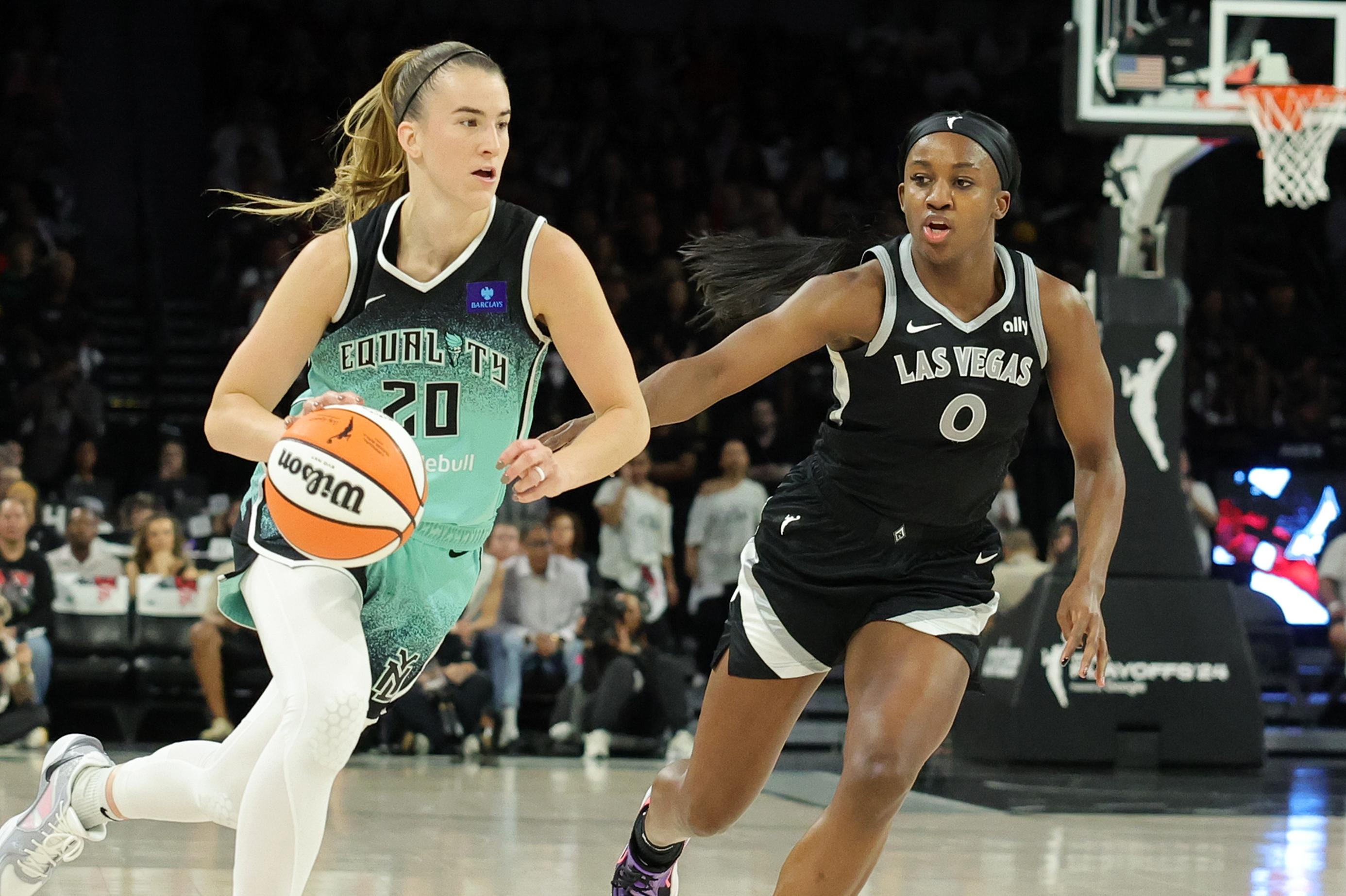
10. Kahleah Copper, Wing, Phoenix Mercury
Kicking off the top 10, Copper is fresh off the most productive season of her career. She posted career highs in points (21.1) and assists (2.3) while putting together a strong Clutch Player of the Year case (2nd in points while converting nearly 58% of her shots) if the award existed on the W side.
Copper's season-long defense naturally took a hit with the heightened offensive burden, but the clamps are still there when needed. With the talent influx in Phoenix, we may get to see more of that defensive value return—as well as her cutting chops offensively.
9. Jackie Young, Wing, Las Vegas Aces
It was an interesting year for Young as the Aces worked to find themselves on both ends. Young assumed more on-ball usage due to Gray's early absence. That led to some process growth that should bode well moving forward—she became a more daring passer (career high 5.3 assists) and was much more willing to fire from deep (attempted a career high 5.6 3s, particularly when defenders went under screens, for example—but it didn't lead to the cleanest year overall.
Her efficiency dropped pretty drastically last year, from an absurd 65.7 True Shooting mark to a still-solid 55.7, due to defenses ramping up the pressure and the basic truth of Young having to create for herself more. Over 44 percent of Young's baskets were self-created last season, easily her highest mark since becoming a full-time starter in 2021. And because her offensive role shifted to this degree, she was far from her usual All-Defense level exploits.
(And on top of all that, we learned during the postseason that Young had been playing through injury since the Gold Medal game.)
A healthier Young should be a better Young.
8. Jonquel Jones, Big, New York Liberty
Jones finally "completed" her WNBA resumé last season, adding a title and Finals MVP to a scroll that includes an MVP, Sixth Woman of the Year, Most Improved Player and multiple All-WNBA and All-Defense selections.
She's as dynamic as they come at the center spot: a menace on the block (1.13 PPP, 2nd among high volume post players per Second Spectrum), silky-shooting threat from distance (38.8% on 3.9 attempts last season), glass-cleaner on both ends, and a coverage-versatile defender. She's had to scale her game up and down during her stint in New York; that isn't an easy ask, but she's handled the push-and-pull with grace.
It's worth keeping an eye on Jones' handling of double-teams—there's room for more growth and consistency there—but she is undoubtedly one of the best players in the league.
7. Nneka Ogwumike, Forward, Seattle Storm
For my money, Ogwumike is the most underrated star in the league. The player with the strongest counter argument will, funny enough, appear in a couple of slides. It's a label oxymoronic by nature, but true in my experience covering the league and monitoring award conversations.
Ogwumike was All-Defense good, arguably the best hedge defender in the league as part of Seattle's aggressive ball screen ethos. She generated steals at a top-three clip (1.9) and disrupted many more possessions with her timing and understanding of angles. Offensively, Ogwumike was one of the most effective post players in the league (1.1 PPP, 3rd among high volume players per Second Spectrum) while serving as a low-ish volume spacer when asked (40.5% on 2.0 3s).
Her season ended in tough fashion in the opening round of the playoffs, with a mix of uncharacteristic misses and Aces double teams thwarting her. Still, Ogwumike can wear many hats on either side of the floor—and do so at a high level.
6. Sabrina Ionescu, Guard, New York Liberty
Somewhat similar to Young's season, we saw a great deal of process improvement and game refinement from Ionescu that may be missed if you simply look at her box score.
Ionescu didn't knock down threes at her usual level (33.3% on 8.4 attempts), but that largely didn't change how teams defended her. More importantly, Ionescu leveraged the threat of her shot to further unlock her playmaking, and to become dangerous as a downhill threat.
She sought out and played through contact better. Crucially, she became more comfortable with floaters and short pull-ups, giving her a much-needed counter when teams ran her off the line and attempted to barricade the rim. Even more quietly, Ionescu grew as a defender. She was placed on a little bit of everyone last year, mostly as a vehicle to empower Breanna Stewart (and others) in cross matches, but that gambit wouldn't have worked quite as well without Ionescu holding up her end of the bargain.
A fun stat from Second Spectrum: Ionescu was one of 60 players to defend at least 100 drives last season. Ionescu's points-per-possession allowed (0.9 PPP) and blow-by rate (24.5) figures were lower than Napheesa Collier's (0.91 PPP and 26.1 respectively).
No reasonable mind would argue that Ionescu was or is better than last year's DPOY; New York's ability to shrink the floor behind her obviously helped both of her numbers. But that she was even within this range speaks to the do-your-job level she's reached on that end.
No. 5: Caitlin Clark, Guard, Indiana Fever
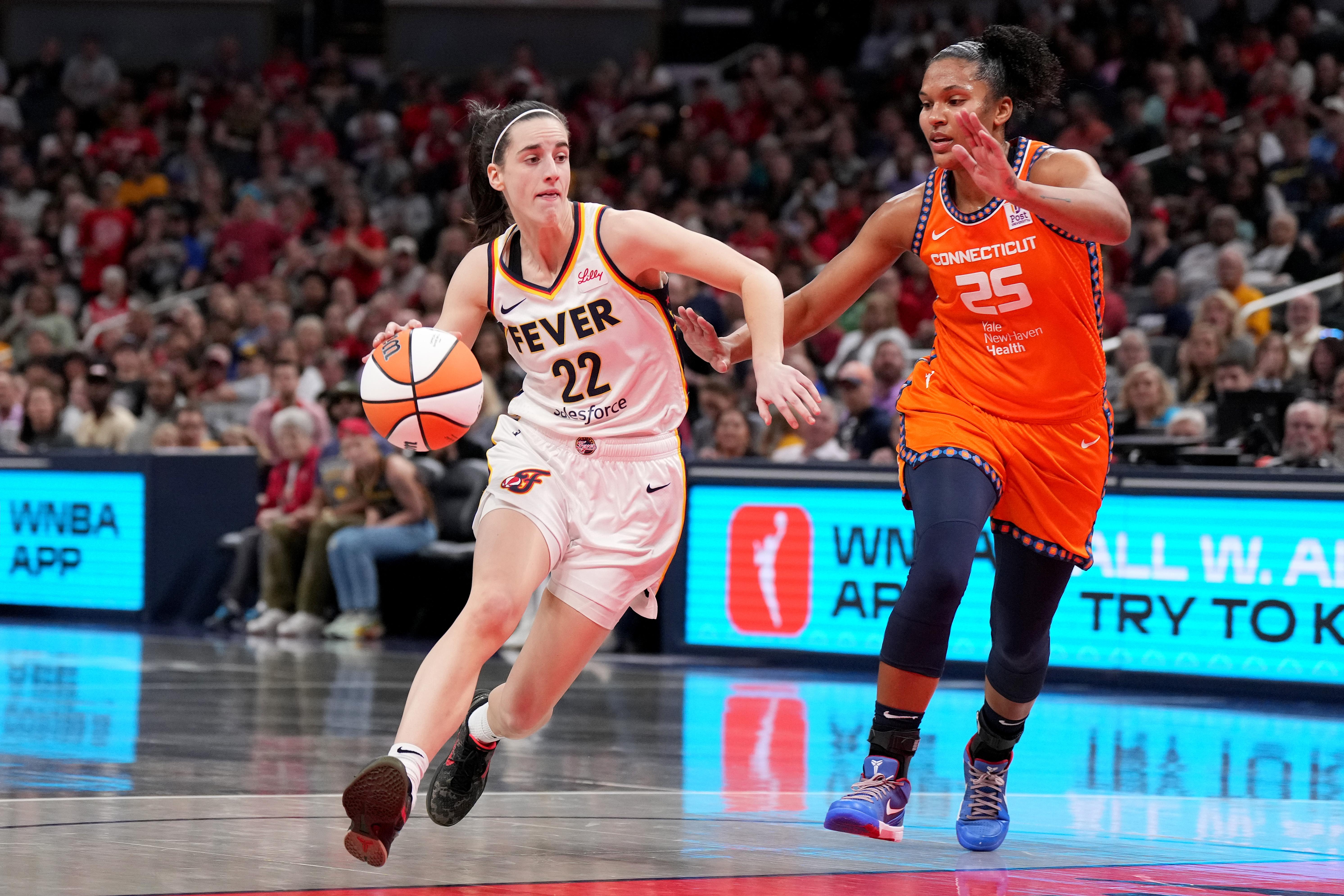
Last year's numbers: 19.2 points, 5.7 rebounds, 8.4 assists, 1.3 steals, 0.7 blocks, 5.6 turnovers
Efficiency stats: 53.3% on 2s, 34.4% on 3s, 90.6% on free throws, 58.3 True Shooting (+4.7 above league average)
Clark was also somewhat tough to slot. Having a rookie ahead of multiple champions and MVPs feels like a case of Too Much, Too Soon. And there are on-court quibbles to poke at—the turnover numbers, though explainable with coverage and degree-of-difficulty context, are still a lot. There is certainly growth needed defensively, particularly off the ball.
But when your rookie campaign is this historic, with the box score production virtually unmatched, and the skill set is this unique—the blend of audacious passing, incredibly deep three-point shooting and work as a driver is truly a marvel to witness—it's hard not to be this high. There's also the fact that she finished fourth in MVP voting and landed on the All-WNBA First Team; the top-five case is literally there.
From June 15 onward, a 26-game (65% of the season) sample, the Fever were the best offense in basketball, spearheaded by Clark. She was the biggest reason behind the Fever snapping their postseason drought. Her presence alone amplified everything the Fever wanted to accomplish on the floor, and ultimately helped unlock the best versions of Mitchell and Boston.
Her growth against aggressive ball-screen coverages—in which she saw the most of in the league last season—felt night-and-day from the beginning of the season. If we want to talk about impact, the Fever were over nine points better per 100 possessions with Clark on the floor—one of the largest differentials among starters in the league.
If the defense or ball security doesn't improve in a real way, it'd be more than fair to slide her down a few spots. If players behind her level up or return to form, again, it'll be more than fair to slide her down.
But it feels more reasonable to bet that, with an actual offseason and time to refine her game, that she enters next season even better.
No. 4: Alyssa Thomas, Forward, Phoenix Mercury
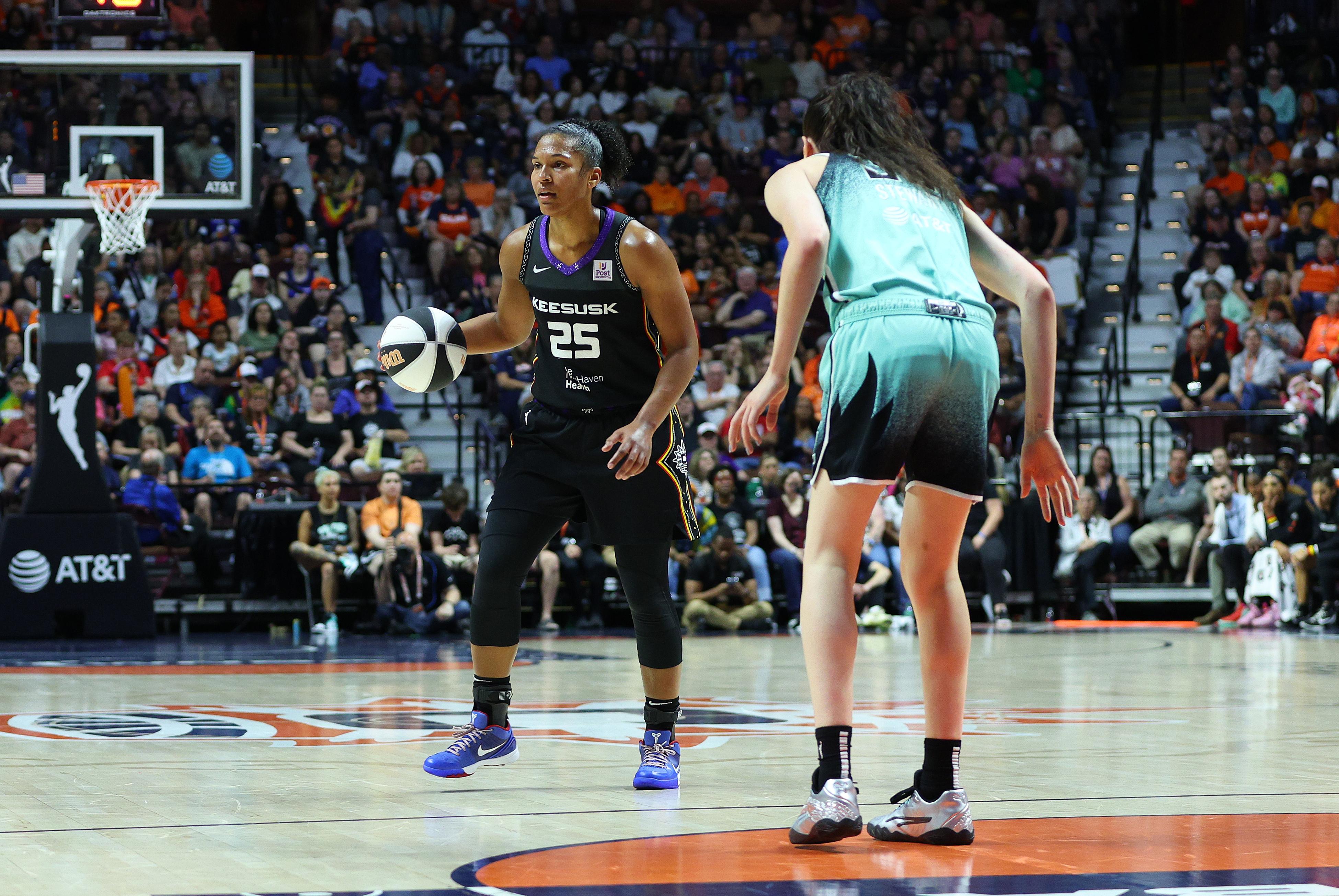
Last year's numbers: 10.6 points, 8.4 rebounds, 7.9 assists, 1.6 steals, 0.5 blocks, 3.6 turnovers
Efficiency stats: 51.6% on 2s, 0% on 3s, 62.8% on free throws, 54.3 True Shooting (+0.7 above league average)
Remember the "most underrated star" argument I made for Nneka Ogwumike, and that the player who has the strongest claim to that title was coming up?
Well, we're up.
I just flat-out don't think people fully appreciate how good Thomas is and has been. That she's had a three-year run averaging 13.2 points, 8.8 rebounds, 7.3 assists, and 1.7 steals without earning an MVP or DPOY is understandable on one hand—the three players ahead of her are incredible and have earned said-hardware—but also a bit unfortunate for Thomas. Remember: she finished second in MVP voting in 2023 despite having the most first place votes.
At any rate, Thomas remains an offensive engine due to her open-floor playmaking, work as a handoff hub, screening work, and occasional post play. Defensively, she's arguably the best we have in the league, hardware be darned. There isn't a coverage she can't execute, nor is there a player archetype she isn't comfortable defending in space. She bullies folks at the point of screens—her hedge or trap ability is only rivaled by Ogwumike in my opinion, and I'd honestly give the slight edge to Thomas.
What's held Thomas back, which bleeds into her being a bit under-appreciated, is her scoring ability. Teams still have to account for her off the ball because of her willingness to screen and direct traffic, but she doesn't pose a real threat as a perimeter scorer. Her mid-range push shot is convenient, but not a weapon that teams are consistently afraid of. Her overall scoring aggression waxes and wanes, which puts a bit of a cap on the offensive ceiling in a playoff setting.
That she's this good and impactful anyway is a testament to her basketball mind, physicality, and ability to make players better on both ends.
No. 3: Breanna Stewart, Forward, New York Liberty
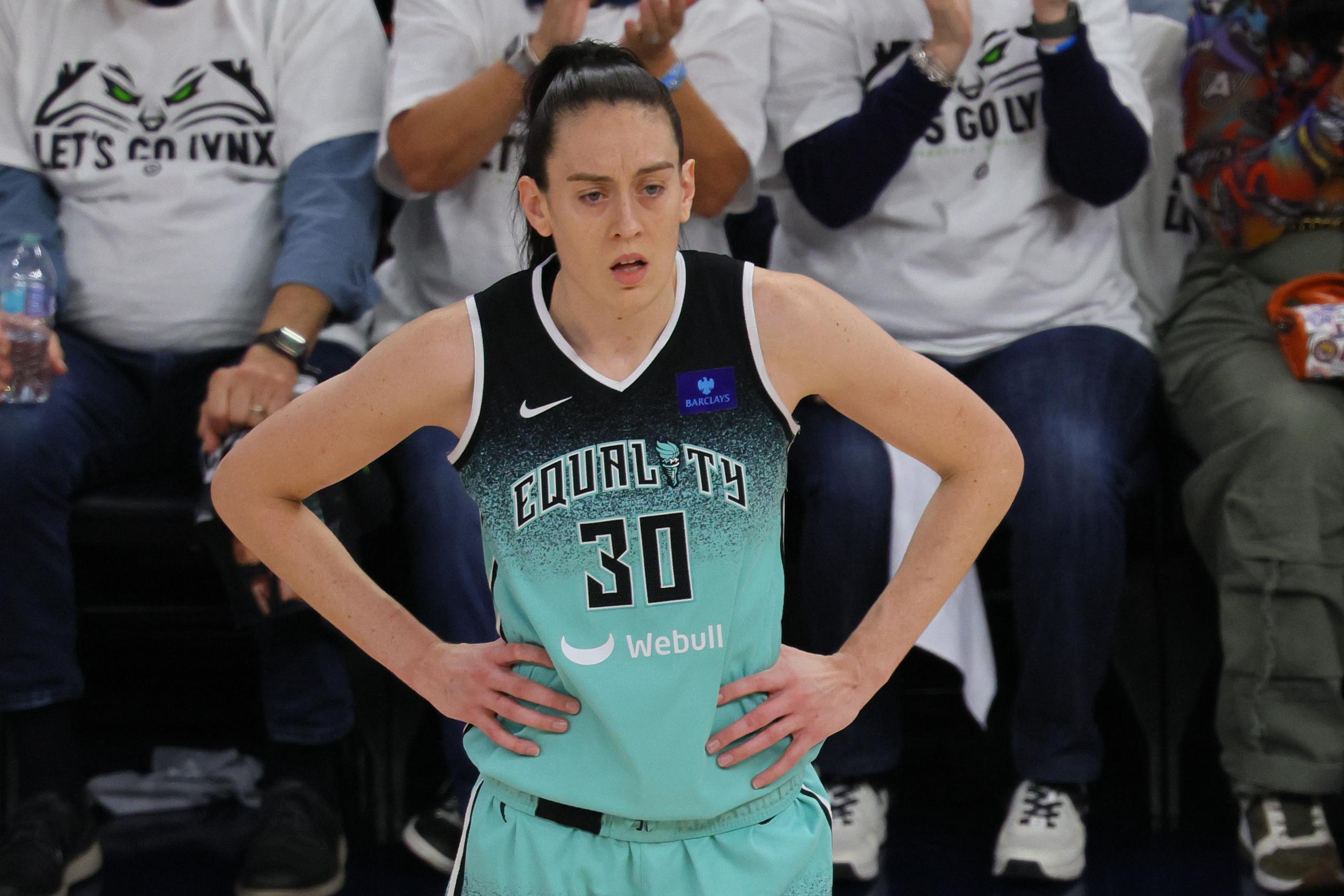
Last year's numbers: 20.4 points, 8.5 rebounds, 3.5 assists, 1.7 steals, 1.3 blocks, 1.7 turnovers
Efficiency stats: 51.9% on 2s, 29.5% on 3s, 84.5% on free throws, 56.9 True Shooting (+3.3 above league average)
First and foremost, get well soon, Stewie!
Per Breanna Stewart’s Instagram, she is in recovery after some kind of leg procedure. “might or might not retire the leg sleeve,” the caption reads, “but definitely getting rid of all that tape, iykyk.” If/when we get some more info, I’ll follow up. ‘Til then, rest up, Breanna! pic.twitter.com/5h9K0Nhaec
— Myles (@MylesEhrlich) March 13, 2025
Beyond that, everyone should understand how good Breanna Stewart is at this point.
She is the skeleton key for the New York Liberty: a high volume scorer when needed, pick-and-roll creator when needed, post threat, screening threat, point of attack defender, weakside roamer. You name it, she has and can do it.
At this point, the only non-health question I have concerning Stewart is the three-ball. She shot 29.5% from deep during the regular season, 28.6% during Olympic play, 26.1% from deep during the postseason, and 18.6% from deep during the Unrivaled season.
I'm not sure how much of that can be attributed to the knee, but you'd naturally like to see that corrected so Stewart can lean more into off-ball usage as Ionescu (and Jones) command more of the scoring load—at least during the regular season.
No. 2: Napheesa Collier, Forward, Minnesota Lynx
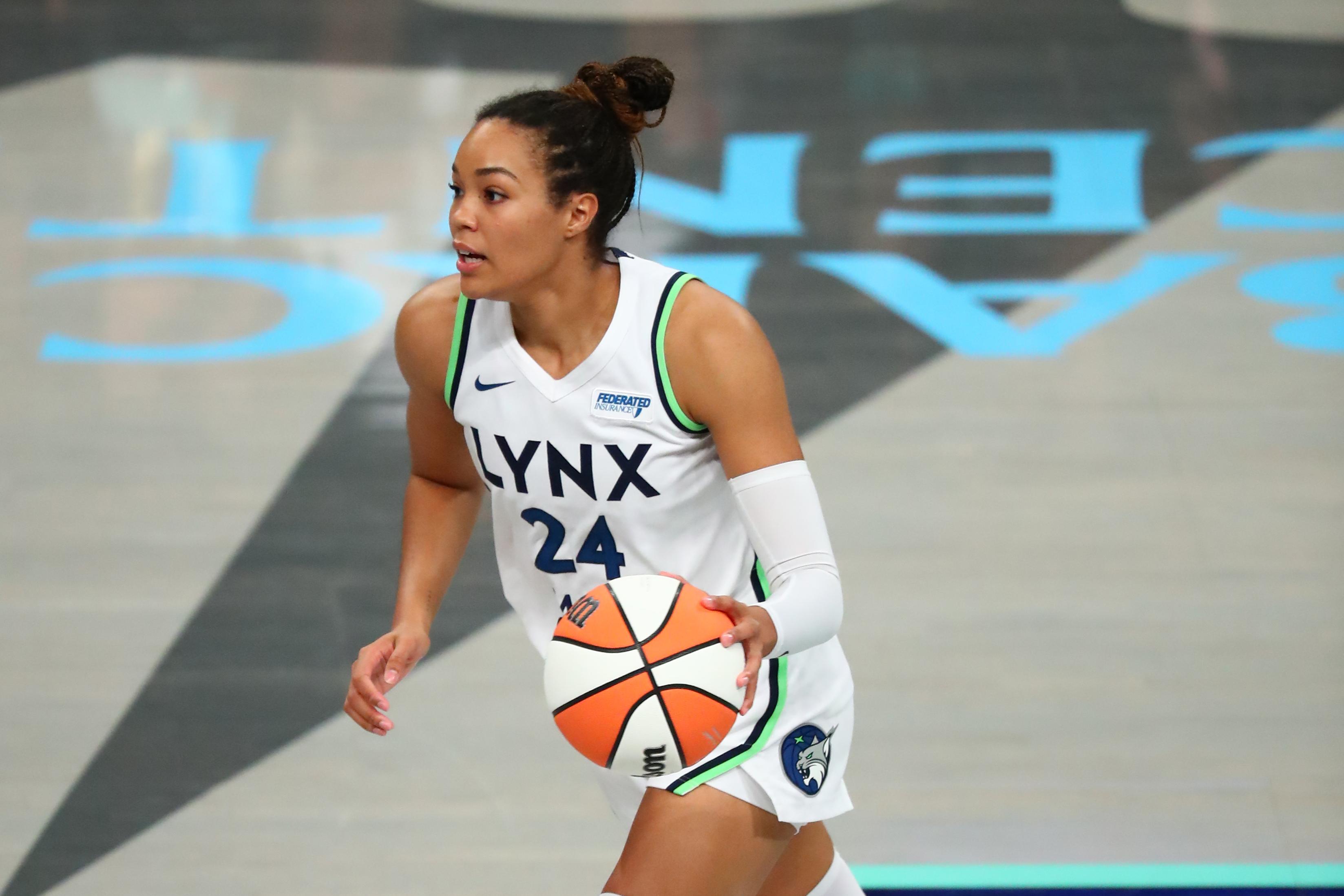
Last year's numbers: 20.4 points, 9.7 rebounds, 3.4 assists, 1.9 steals, 1.4 blocks, 2.1 turnovers
Efficiency stats: 53.3% on 2s, 31% on 3s, 80.4% on free throws, 56.5 True Shooting (+2.9 above league average)
Phee is like that.
Players like Stewart and Collier are generally my favorites in basketball: do-it-all forwards who can oscillate between scorer and facilitator, while also executing whatever you ask them to defensively. It's the meta in basketball these days, and watching Collier grow into this—an MVP-caliber, DPOY-winning monster with a not-so-quiet edge—has been incredibly fun to witness as a basketball fan.
(On that note, let this be the end of soft-spoken people being underestimated as fiery competitors. We don't have to act surprised by this anymore. To be this good, you have to have some sort of edge to you.)
Anyway, Collier followed up a career-best regular season campaign with one of the most prolific playoff runs in WNBA history (23.8 points, 8.9 rebounds, 3.3 assists, 2.1 steals, 1.9 blocks). She then had the audacity (complimentary) to follow that up with an MVP season in Unrivaled play (25.7 points, 10.6 rebounds, 2.8 assists, 2.0 steals, 1.4 blocks), though the Lunar Owls were upset by Vinyl BC.
I'm keeping an eye on the three-point shooting for Collier. She's been better in the postseason (45.3% on 2.4 attempts) than in the regular season (31.7% on 2.7 attempts) for her career—and as you can see, the volume isn't super high. Teams are still largely okay with her taking those shots if it means she isn't driving or getting to her mid-post work.
If she firmly establishes herself as a consistent threat from outside, I'm not quite sure what you do with her.
No. 1: A'ja Wilson, Big, Las Vegas Aces
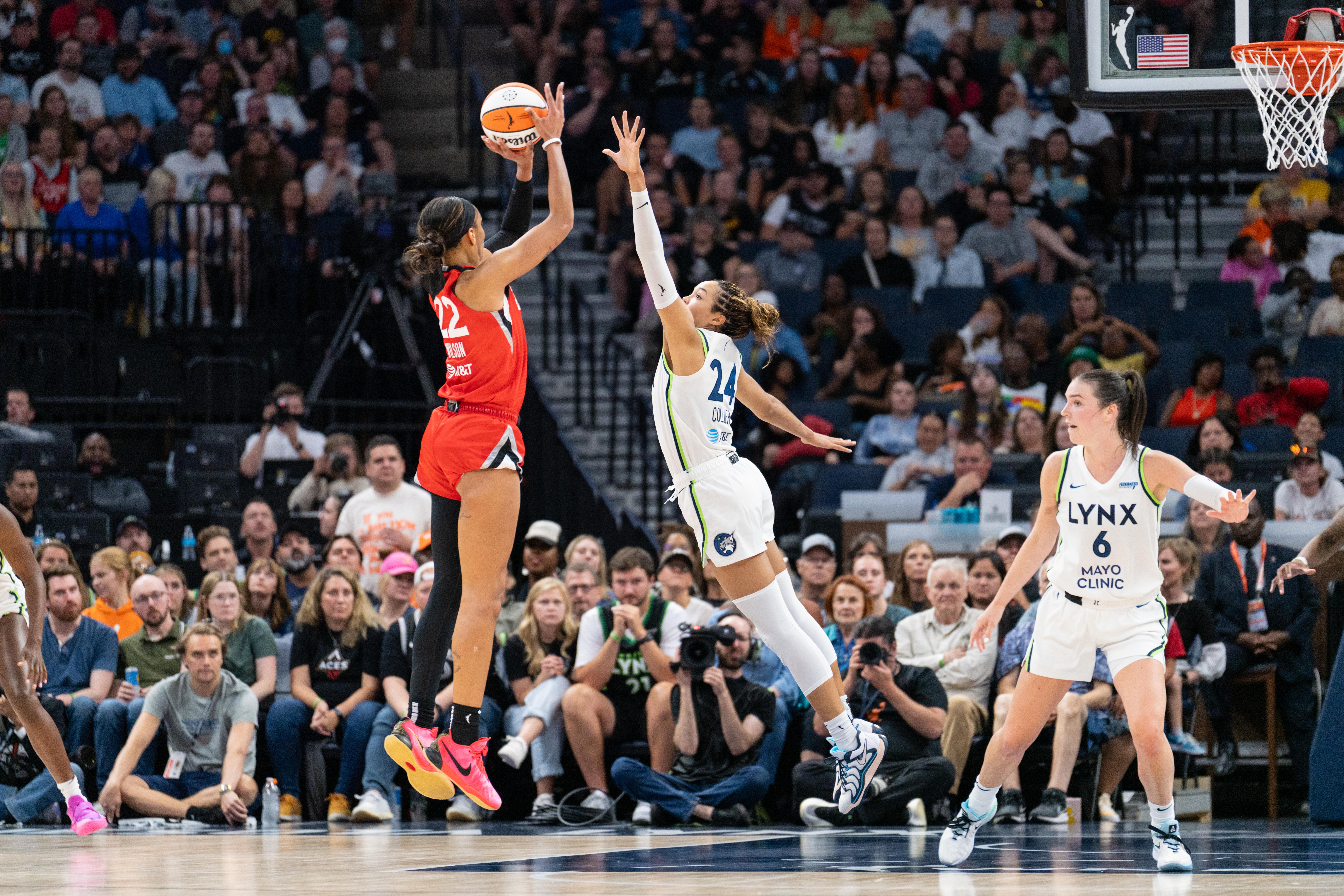
Last year's numbers: 26.9 points, 11.9 rebounds, 2.3 assists, 1.8 steals, 2.6 blocks, 1.3 turnovers
Efficiency stats: 53.6% on 2s, 31.7% on 3s, 84.4% on free throws, 59.1 True Shooting (+5.5 above league average)
As someone who not only witnessed the season in real time, but covered it, I still found myself laughing when I had to type out her stats from last year.
Because what do you mean she averaged 27-12-2-2-3 across a full season?
Wilson's 2024 campaign was a level of I-don't-care-what-you-do dominance that's still difficult to comprehend, especially when you consider the roster/injury/opponent game-plan context she had to operate within.
Wilson's creation (and minute) burden skyrocketed last season, and she largely took that burden in stride. In addition to leading the WNBA in isolations and being the league's best post-up threat (1.15 PPP), only 13 players—all perimeter players—received more off-ball screens than Wilson. She was trusted more to bring the ball up the floor—and the Aces generated nearly 1.09 PPP (!) on the possessions she did. She took joy in the increased playmaking burden, something I'm intrigued to see evolve moving forward.
Wilson wasn't the apex version of herself defensively because of that offensive burden, which makes it even more ridiculous that she led the league in blocks and finished in the top five on the steals leaderboard.
Wilson has experimented with the three-ball but has mostly gone away from it; after taking 83 (37.3% clip) during the 2022 regular season, she's taken a total of 89 (31.5% clip) in the two regular seasons since.
She doesn't need it in her repertoire, but it would be a nice bonus to have. One of the weirder stats of last season was the Aces technically performing better offensively with Wilson on the bench, though a quick dive reveals the explanation: three point shooting.
The Aces' three-point rate (percentage of shots coming from deep) went from roughly 36 percent with Wilson on the floor, to 50.7 percent with Wilson on the bench, with more of those shots going in while she was on the bench (37.9% vs 34.5%).
There are worthy challengers for the No. 1 spot, but for now, that (still) belongs to Wilson.




